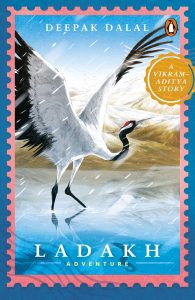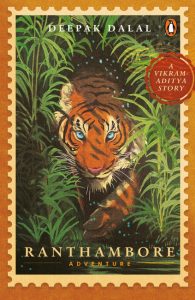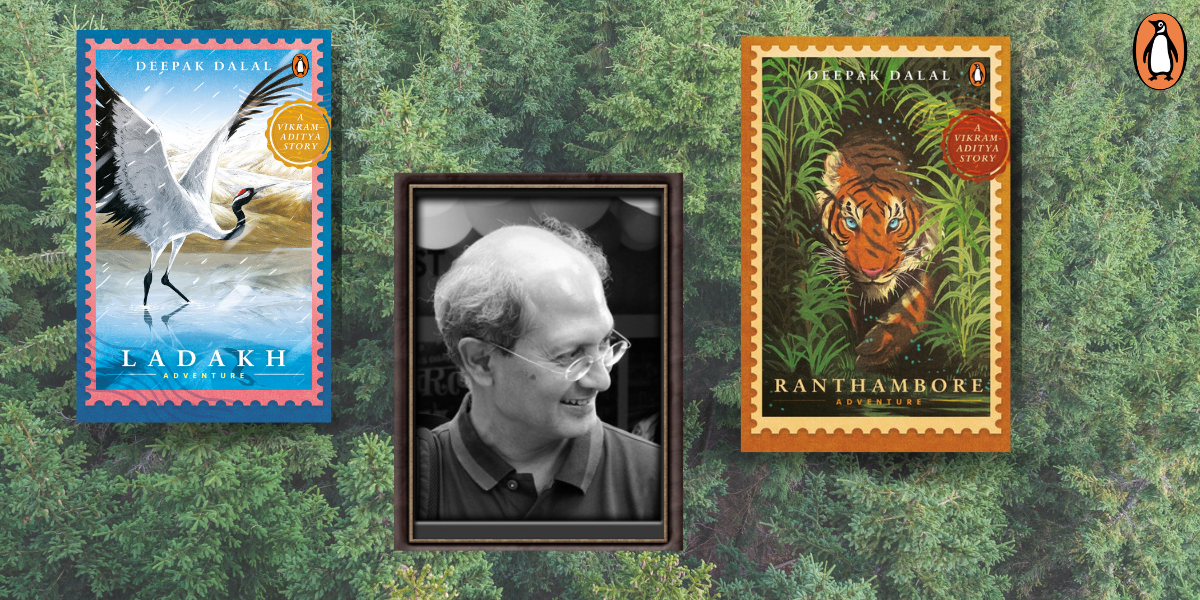What drove you to write children’s fiction in particular?
I have always believed that stories are a great tool for disseminating ideas. When you read a good book, the story grips you and you sponge in the concepts the writer weaves in. Children are receptive, they are open to ideas. Adults are hardened versions of children and stories – as a means for influencing the reader – grow less effective. This is why I find writing for children far more rewarding.
Apart from this I empathise with children and I enjoy spending time with them. By no means can I call myself young, yet I like to believe that there are a lot of childlike qualities in me.

Your books may fall under the broad genre of ‘children’s fiction’, but the themes you highlight deserve urgent attention. What attracted you to these fragile ecosystems?
The threat to the well-being of our planet is very real. Across land, freshwater and the oceans, human activities are forcing species populations and natural systems to the edge. There have been 5 mass extinction events in the 4.5 billion years that the earth has existed. Each of them due to natural causes. It is the current belief that we are in the midst of the sixth mass extinction and this one is entirely due to humans and our activities.
Most children live in cities today, entirely disconnected from the natural world. Through stories set in wilderness destinations I try to connect children with wildlife, forests and the great beauty of our planet. My hope is that if at a young age they can be drawn to the natural world, they will help in saving what remains of it.

How would you describe the wildlife conservation efforts in India at the moment?
We have some of the best wildlife scientists and conservationists in the world. Several species have been brought back from the brink through their efforts. These include animals like the tiger, the snow leopard, the rhinoceros, and birds like vultures and the amur falcon. But it isn’t all hunky dory. In spite of our best efforts, we are about to lose the Indian bustard and with the shrinking of wildlife habitats many more creatures will disappear. The loss of forests and wildlife isn’t for lack of effort on the part of conservationists. Rather it is the absence of political will and the apathy of our public – for most of whom wildlife is inconsequential – that is at the root of the problem.
You describe the moments of encounters between human beings and animals with great detail and intimacy. Are these based on your own experiences with animals?
I spend a lot of time researching my books. I travel to the destination where the story is set and hook up with wildlife conservationists who are studying animals there. This could be people who are studying tigers, or snow leopards, or marine scientists researching oceanic creatures. These researchers take me into wilderness areas where others can’t visit and it is my experiences with them that provide the backbone to my stories and help me describe animals and landscapes with clarity and detail.
In this moment, do you think it is possible for human beings and animals to really live in harmony without impinging on each other’s spaces?
One can’t do away with human-animal conflict. It will always exist. But we can significantly reduce the conflict. Today wildlife exists in isolated forests, most of them small and inadequate for species like elephants that roam in search of food. Wildlife scientists are campaigning for building corridors (stretches of jungle) that will connect the forests and allow animals to move unhindered from one forest to another. These corridors are vital for reducing tragic encounters between animals and humans.
—







